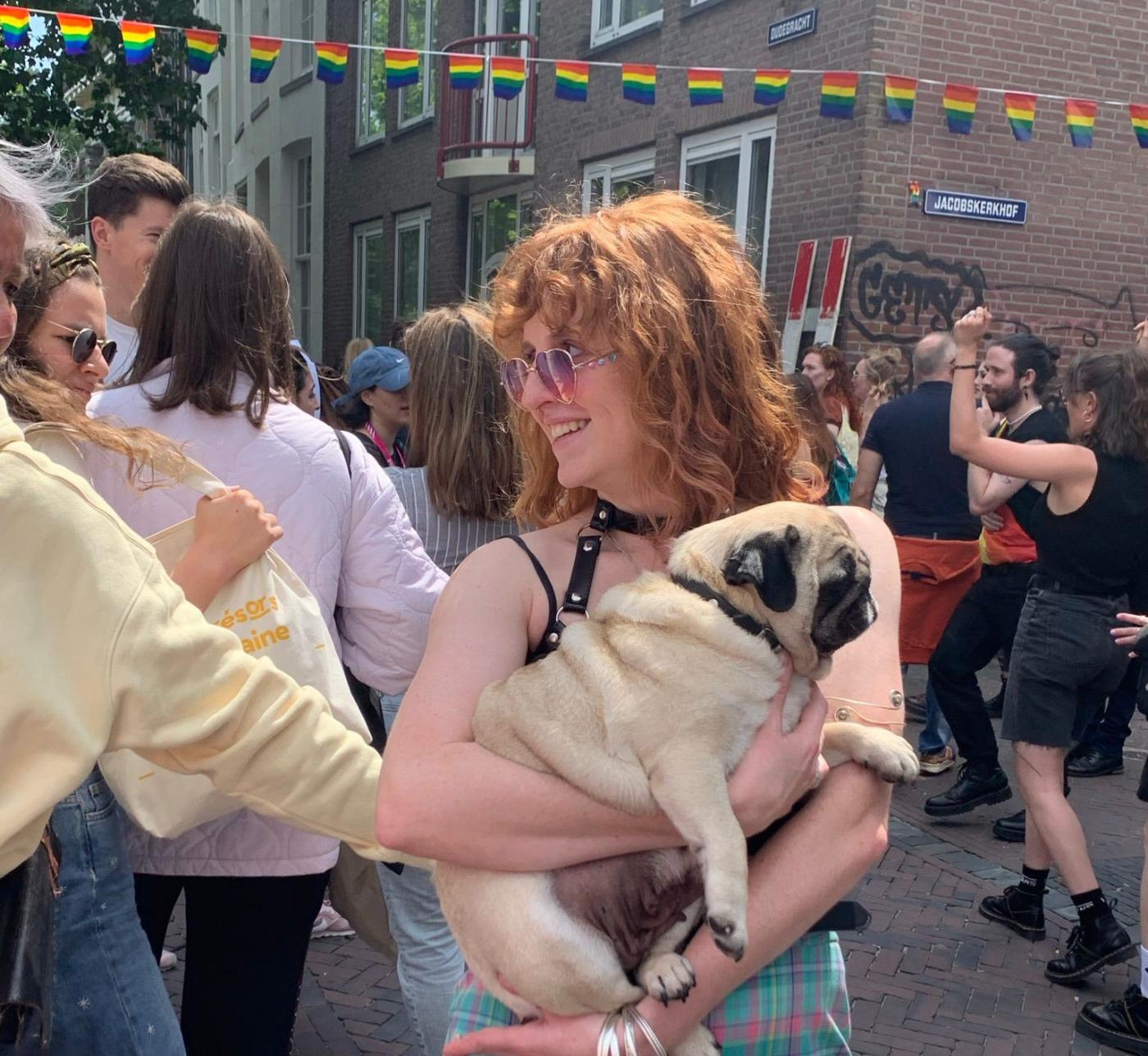'Let's put the political back in Pride'
The Politics of Pride

A little under a year ago, a group of women, trans and non-binary folks were sitting on a city centre rooftop, topless and soaking up the sun. Between laughter, crying and moments of stillness, they could hear the swelling crowds wafting up from below them. Snatches of music, waves of cheering and thousands of bodies dancing to the beat.
At least, that’s how I imagine it from what they told me. I was part of the masses at Utrecht Canal Pride. Piled on top of friends on someone’s windowsill, we excitedly peered down at the boats and floats making their way past. Smoke breaks and vibe checks led us down the narrow stairs that spilt us onto the street. I painted people’s faces with glitter, met a Pride pug, and felt slightly awkward that I was the only person I could see wearing a harness—a typical kink/fetish accessory in the queer scene.
This uneasiness was sprinkled throughout my day. Walking back to my bike I was cat-called. I saw two women tentatively kiss and receive cheers from a group of men surrounding them. Afternoon after-parties were thronging with shirtless, oiled muscle men. Where were the fat bodies? The disabled bodies?
This didn’t feel like the other queer events I regularly attended in Utrecht where immense care and consideration were used to centre FINTA (female, intersex, non-binary, trans and asexual) people, who have historically been marginalised within gay and lesbian spaces. Where disabilities were acknowledged and catered to. Where funding was always short and the queers were usually poor.
Thanks to late-stage capitalism, LGBT+ folks are seen as a profitable niche market. We’ve been made into a category that can be sold, and sold to. In a little over a month, we’ll be back at Pride Month. Companies will imbue their logos with rainbows and still have gender-exclusive bathrooms and workplace cultures which exclude trans employees. Millions of people will add to landfills with plastic novelty sunglasses, gold spandex and rainbow flags, and poor people and indigenous communities will continue to bear the brunt of environmental degradation. Glittered selfies will flood social media only to be bumped off the algorithm the next day by oat milk ice coffees and fast fashion.
These troubling links are what my friends on the rooftop were trying to avoid. Instead, they saw Pride as a day to come together, talk about what queerness and being LGBT+ meant to them, and enjoy feeling at home in bodies which are policed and pressured into stereotypical beauty standards. They didn’t want to be sucked into spending money on a day when they were supposed to be celebrated, not seen as consumers.
People see Pride as a party, but I want it to be more political. I want to see a float for sex workers who are being pushed out of their own Red Light District. I want the DJ’s to be trans and the performers to be fat. I want sections of the canal to be reserved for people with mobility impairments and their friends—how easy do you think it is to reserve a spot hours before the parade starts if you use a wheelchair and need to be near wheelchair-accessible toilets? I want neighbours to open their bathrooms to trans folks, intersex bodies and women, for free, because when urinals are the most common public bathrooms the city is making a statement that people who can use them are the ones who deserve to be in public space the most. I want T-shirts with radical slogans and a moment of silence for all the queers who are still unsafe in their own homes, their own neighbourhoods.
I want to put the political back in Pride.